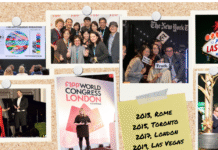Correspondent Priyanka Tanwar interviewed historian Manu S Pillai about his literary works, captivating cover designs, book titles, the depiction of history in school textbooks and the interpretation of history by different people. School textbooks, he feels, are the most difficult to write as condensing Indian history into about 50 to 100 pages is not an easy task.
Edited excerpts.
Indian Printer and Publisher (IPP) – Please inform our readers about your latest work.
Manu Pillai – False Allies : India’s Maharajahs in the Age of Ravi Varma is a book on the Indian princely states. Whenever we talk about maharajas, we think of palaces, dancing girls, elephants, chandeliers, and trauma like a Sanjay Leela Bhansali movie set. That’s what comes to people’s minds. But if you look at the princely states seriously, which you must, it’s actually a much more interesting space. There are politics, anti-colonial rhetoric, and anti-colonial strategies. So, it’s actually a much more political space than we give it credit for. I insist on giving it credit because when we talk of modern Indian history, we talk of the 60% of India that was under direct British rule. But 40% was under Indian maharajas. How can you exclude that in modern Indian history? This means there must be a more serious and sustained engagement with that topic, which I attempt to do in False Allies.
IPP – Tell us something about your journey to becoming a historian?
Manu Pillai – It’s a long journey to build a familiarity with the archives. You have to build a familiarity with how to critically engage with your sources, how to find sources in obscure ways, and how to find sources in interesting ways because not everything may be obvious at first. You can look in multiple places, keep your eyes open and be open and think out of the box often. Only then perhaps you have something that can help you build a historical argument, and make certain historical claims. But it’s been great fun. I have been at it since 2009 even though my first book was published in 2015. I am still learning. it’s a process and I suspect, it’s a lifelong process.
IPP – How has the Covid-19 pandemic affected your writing?
Manu Pillai – It’s been tough to get into archives physically. It’s been tough to travel. It’s been tough to see some places that you’re writing about. That’s a little bit of a frustration. On the other hand, there’s been more time to sit and actually write. There’s been more time to sit and actually look at your material and build your argument and actually do the work. Whereas if you’re constantly on the move – you have events, you have meetings to go to, seminars – sometimes you don’t have enough time to actually sit and write. Now that the pandemic is no longer as intense as it was, hopefully, it will go back to some kind of new normal.
IPP – You use social media a lot to create awareness around history. Would you like to comment on that?
Manu Pillai – I use Instagram a great deal, although Twitter is not really my space. It’s far too toxic as people are constantly fighting on Twitter, so I am not very Twitter-friendly. I find Instagram very useful – it’s all pictures so you don’t have to say that much. It’s not as toxic. The format doesn’t allow for that kind of talk, at least not as much as on Twitter. I like that and it’s also where a lot of young readers are. I think my whole interest lies in wooing young readers into history, not just writing for people who already have an interesting history. I’d rather help younger people cultivate an interesting history.
IPP – You use a lot of pictures of miniatures, paintings, and sculptures in your Instagram stories. Where do you get hold of those?
Manu Pillai – Oh, so many places. Sometimes during travel. I was in London in October, for example, where I came across this wonderful album from the 1870s, full of these images of colored paintings, colored photographs, and things like that. I took pictures of that. I have many of these on my phone and end up using them depending on different moods. If I want to communicate something, I put my caption on it. Similarly, there are a lot of miniature paintings – you now find them online in France, in Amsterdam, at the Ritz museum, the British Museum, the Royal Collection in London. All of these have large chunks of their collection digitized and are available online. It’s open for anybody to go and view, download and study.
IPP – The present government is changing the historical landscape of the country. Would you like to comment on that?
Manu Pillai – All political parties tend to do this. They try to read histories in ways that fit their ideologies and narratives. In that sense, it’s not new. What is perhaps new is the level at which this is happening, the kind of energy that’s been thrown into it. The use of social media to yell at people who don’t agree with your reading of history. The use of all kinds of technologies to harass people who disagree with the way you look at the past. The process has always happened but it’s become particularly noisy and frustrating in recent years. My answer to that is writers and historians should keep doing good books, and keep doing their research properly because ultimately when the din and the clamor of social media die down, it’s still in books that a lot of readers will find a more sustained engagement with those topics. You don’t always have to agree with historians – history is about debate. One historian’s reading of the past may not be what another historian gets to. That’s the way history operates. You have to come to it with a certain maturity knowing that’s how it is. It’s not some kind of battlefield and it’s not some kind of political field where everybody comes with their horses. It’s not some kind of race to reach something.
IPP – Would you like to comment on the depiction of history in school textbooks?
Manu Pillai – It’s typically a bit dull. School textbook writers have my sympathies because they are supposed to condense Indian history into about 50 to 100 pages. It’s not easy to do that. For example, try to condense a subject like the freedom struggle or the Marathas under Shivaji into 50 pages, and you are going to end up doing a simplistic job. You’re not going to be able to do a fully layered, well-rounded kind of account of what happened. That’s unfortunately partly because of the nature of a textbook, it’s partly because of limitations in terms of space. For me, the answer is not really in school, it’s really at the university level. I would rather engage teenagers and people at the university level to read history and hopefully through books like mine. And then cultivate an interesting history, where you are able to engage with it outside of the textbook. By design, textbooks are not equipped to do justice to history.
IPP – How do you select the titles of your books?
Manu Pillai – Oh, very much at the last minute. That happens right at the end. Titles are shortlisted at the last minute based on all kinds of factors – it has to have recall value, it has to be interesting, and it has to be something that people haven’t repeatedly used as a formula. Thought goes into it. But often it’s in the final week before the book goes to press that we finalize the title of a book.
IPP – Your books have very captivating illustrations on their covers. Tell us about that.
Manu Pillai – That’s actually another exciting thing, finding the right image for the cover. When I did Rebel Sultans: The Deccan from Khilji to Shivaji, there were lots of miniature paintings. But they were too crowded, with too many characters, and too much happening in the background. And then we came across this wonderful, simple image with a blue background of this king riding an elephant and it seemed to convey what I was trying to communicate in the book very well. It’s simple but it’s definitely eye-catching, it’s definitely a unique piece and, therefore, we went for it.
IPP – Would you like to give a message to our readers?
Manu Pillai – Read a lot. The more you read, the better you get at understanding the world, understanding the past, and getting clarity into your own writing.
IPP – Thank you for speaking with Indian Printer & Publisher
















